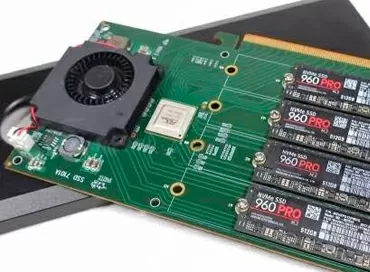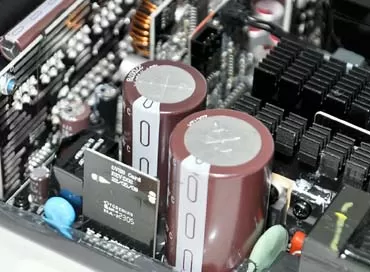Guide to the server power supplies
Server power supplies, which are used to provide power to server components, have various parameters, such as power, current, and voltage. Depending on the type of server enclosure and its capacity, power supplies are divided into different categories.
Conventional ATX power supplies
ATX is a standard power supply that is used in desktop computers and in some low-power servers. Conventional ATX power supplies are used in small servers, including desktop servers that do not require much power for their operation. Such servers are used, for example, for organizing local networks in small companies, small cafes, as well as home local networks.
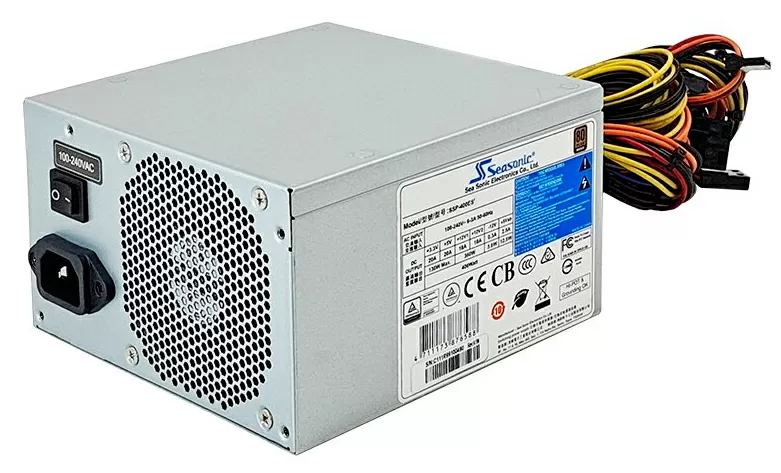
The main reason for using conventional power supplies in such servers is their affordable cost and ease of replacement if necessary. In contrast, for most servers, it is preferable to use more professional power supplies, since they have higher reliability and lifetime, as well as less noise.
There is no guarantee that the power supply from the gaming computer will be suitable for installation in the server. The power supply must meet the requirements of a specific server in terms of power, number of power connectors and cable length. But if these conditions are met, a high-power gaming power supply can be installed in the server. Traditional power supplies are characterized by capacities from 450 to 1200 watts. More powerful models with 2000 watts are extremely rare, since fault-tolerant PSUs are already used in equipment that requires such energy.
What is the difference between good ATX server power supplies and desktop ones in terms of components?
If we are considering a good expensive power supply for a gaming PC and a good server one, then I won't even tell you which one will be better in terms of components. Gaming PSUs often get to journalists and bloggers for reviews, where they are opened and shown every detail, and this almost never happens with server power supplies, so the chance of meeting higher-quality components in expensive gaming PSUs is even higher than in server ones. Including because the manufacturer can use more temperature-resistant components in gaming PSUs to reduce the noise of its power supply, and some top PSUs for home computers today have a 10-year warranty (more than for any server).
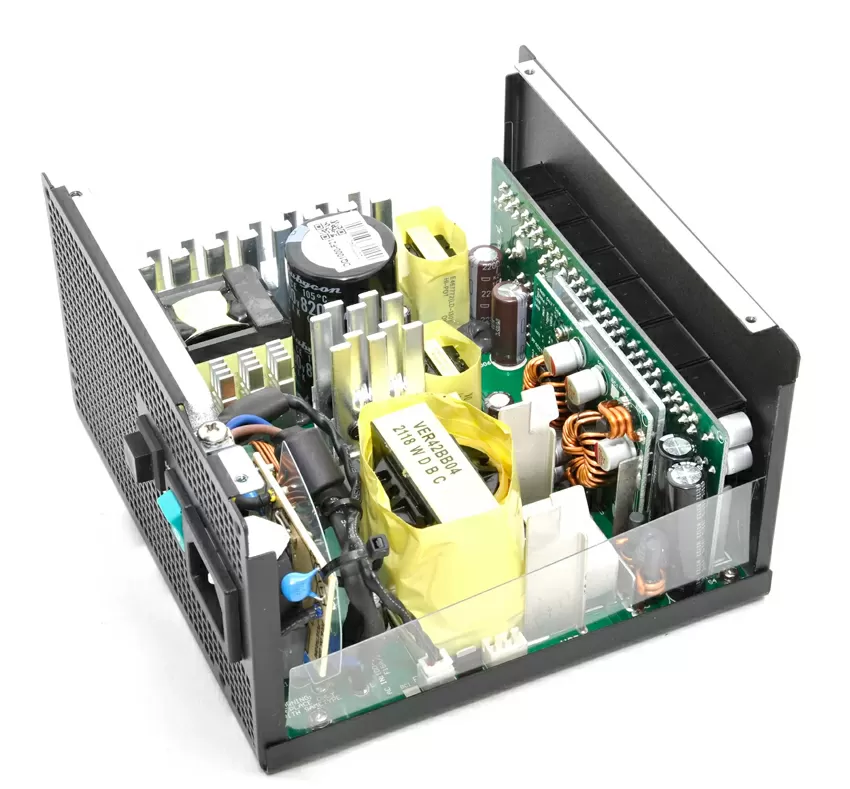
Therefore, it cannot be said that an ATX server PSU will definitely be better than a good desktop power supply, rather the opposite.
1U format power supplies
1U power supplies are most common in the server industry. They are used in servers and storage systems with a small number of disks and other components.

The 1U standard power supply has the following dimensions:
- Width: 80-100 mm (3.15 - 3.94 inches)
- Height: 44.45 mm (1.75 inches)
- Depth: 254 mm (10 inches)

And although they look similar to FlexATX format models, the latter have different sizes:
- Width: 73.5 mm (3.11 inches)
- Height: 40.5 mm (1.59 in)
- Depth: 150 mm (5.9 in)
FlexATX standard power supplies are most often used in compact servers, network solutions, desktop NAS, video surveillance equipment and other devices in which the size of the power supply is an important factor. In some cases, the server enclosure may be compatible with both 1U and FlexATX power supply, but it should be borne in mind that the depth may vary depending on the power. The typical power of 1U server power supplies can be up to 750 watts, and FlexATX can have up to 500 watts. In some more powerful server configurations, power supplies with up to 1600 watts can be used.
Fault-tolerant power supplies
Fault-tolerant server power supplies are power supplies that have multiple units (cartridges) with independent power circuits. If one unit stops working, then other cartridges can continue to provide power to the server, which significantly increases the reliability of the system and prevents downtime.
On the power supply units, the line indicates the model, power and number of installed modules. To connect to the power supply network, the power supplies have IEC 320 connectors, usually 15 or 20 amps.
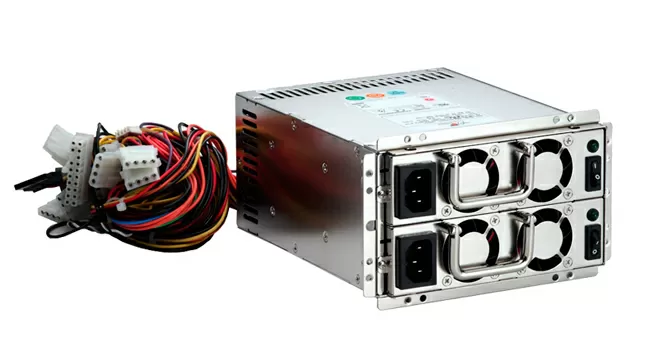
Each power supply can have up to four cartridges. The power of each cartridge is indicated on the power supply itself, but the total power of the power supply depends on the configuration (the number of cartridges and their power), and may be less than the sum of the capacities of individual cartridges. Power supplies from different manufacturers may be compatible with each other, but it is better to use cartridges from the same manufacturer.
Different power supplies can have a different number of AC sockets per cartridge (a separate AC socket for each or one AC socket for all cartridges). The number of sockets depends on the physical size of the power supply and the technical capabilities to provide adequate power when the cartridges are working. Power supplies with multiple AC sockets allow you to connect the server to various power sources, for example, to two or three UPS at the same time, further increasing reliability. At the same time, one common AC input allows you to make the device more compact, which is important for cases designed for rack mounting. Fault-tolerant power supplies are characterized by capacities from 450 to 2400 watts.
80Plus Certification
Most manufacturers of server power supplies are guided by the 80Plus certification, which is one of the main standards in the power supply industry. 80 Plus certifies power supplies for their efficiency, ensuring that they will consume less electricity and produce less heat when operating.
The efficiency according to the 80Plus standard is as follows (when powered from 230V):
- Bronze: at least 81% efficiency at 20% load and at least 85% at 50% and 100% load;
- Silver: at least 84% efficiency at 20% load, at least 88% at 50% and at least 85% at 100% load;
- Gold: at least 87% efficiency at 20% load, at least 90% at 50% and at least 87% at 100% load;
- Platinum: at least 90% efficiency at 20% load, at least 93% at 50% and at least 90% at 100% load;
- Titanium: at least 90% efficiency at 10% load, at least 96% at 20% load, at least 94% at 50% and at least 91% at 100% load.
- Bronze: at least 82% efficiency at 20% load and at least 85% at 50% and 100% load;
- Silver: at least 85% efficiency at 20% load, at least 88% at 50% and at least 85% at 100% load;
- Gold: at least 87% efficiency at 20% load, at least 90% at 50% and at least 87% at 100% load;
- Platinum: at least 90% efficiency at 20% load, at least 92% at 50% and at least 89% at 100% load;
- Titanium: at least 90% efficiency at 10% load, at least 94% at 20% and 50% load, and at least 91% at 100% load.
The difference in efficiency at different voltages is due to the different efficiency of the converter, which varies depending on the input voltage. In general, the certification level from Gold to Platinum is considered optimal for server power supplies, since it provides high efficiency and reliability of operation and at the same time is not redundant for business.
DC Power Supplies
DC-DC are power supplies that operate from an input voltage in the range from 36 to 75 V DC (V). There are also models that operate from an input voltage of +12V. These power supplies are often used in servers operating in extreme conditions, such as ships, underwater structures or remote areas, and vice versa - large data centers that use centralized AC-DC converters to reduce the cost of electrical losses and cooling.

Traditional power supplies usually have two stages of energy conversion: the first stage converts the alternating current of the power supply to direct current, and then the direct current is converted to the required voltages. This leads to energy losses due to thermal generation, which reduces efficiency. However, DC-DC power supplies do not have the first stage of conversion, since they accept direct AC current coming from a higher-level power supply. This makes it possible to reduce energy losses as a result of heat generation and increase the efficiency of energy conversion in the electronic cycle.
In addition, DC-DC power supplies can be used in uninterruptible power supplies (UPS), solar panels and other systems with high efficiency and sustainability requirements. DC-DC power supplies are characterized by power over 1000 watts.
Shared power supplies according to the OCP standard
The OCP (Open Compute Project) standard provides common racks in which power supplies can be located outside the server enclosures, on the server cabinet itself. This approach is called "rack-level power distribution" and it promotes more efficient use of space and reduces energy consumption in general. According to the OCP standard, each server rack must have a number of installed power supplies that provide power to all servers. Power supplies must be connected to servers via connectors, without the use of cables, which reduces the amount of wires needed to provide power.
This approach allows you to better distribute the load across the power supplies and improve energy efficiency, since in the event of a failure of one power supply, other units will continue to provide power to the servers.
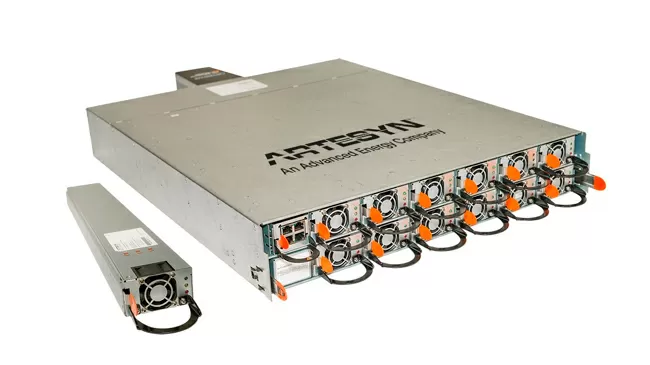
This approach also makes it easier to scale computing systems by adding or removing servers without affecting the power supplies inside the server enclosures. In addition, the power supplies can be hot-swapped, which allows them to be changed without stopping the system.
When using DC-DC power supplies, high efficiency is achieved by reducing transformation losses, which makes it possible to achieve more efficient use of electricity. This is especially important for server systems with high energy consumption, where even a small decrease in efficiency can lead to significant energy costs. For OCP power supplies, typical capacities are from 500 to 3200 watts with an efficiency of up to 96%.
Selection of power supplies by power
For most server power supplies, maximum efficiency is achieved with a load in the range of 20-50% of the total power of the power supply. For this reason, server power supplies are made with excess power, and if the server is designed for a constant consumption of 400 watts, it is quite normal to see a 900 watt or even more power supply in its case.
That is, even with the maximum load of the server with expansion cards, HDD / SSD, memory and the installation of the most powerful processors, it is desirable that it consumes no more than 50% of the nominal value of the power supply.
Major manufacturers of power supplies
Some of the largest manufacturers of server power supplies that provide high-quality and reliable solutions for various server systems are:
1. Delta Electronics is a company that produces a wide range of power supplies for servers and other electronic devices. Delta Electronics is one of the main suppliers of power supplies for many large server manufacturers.
2. Seasonic is a company that is known for its high-quality and reliable power supplies for various electronic devices, including servers.
3. FSP Group is a world leader in the production of power supplies. They offer a wide selection of server power supplies of various capacities.
Ron Amadeo
17/03.2023










